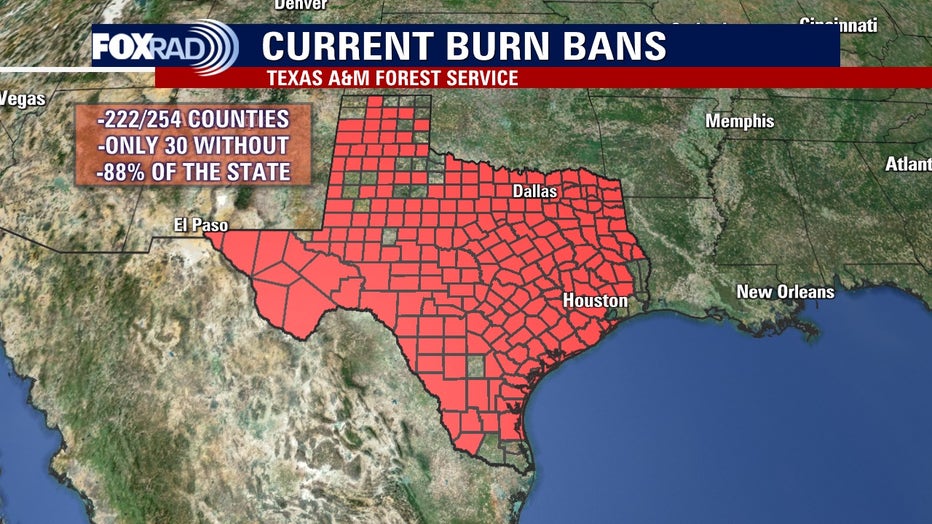U.S. Drought Monitor shows nearly all of Texas in drought
Much of Texas faces a drought with abnormally dry conditions
The latest U.S. Drought Monitor has nearly all of Texas in a drought. While rainfall is not overly promising for the next week as the tropics remain quiet, we have yet to enter the most active months.
HOUSTON - The latest U.S. Drought Monitor has Texas drawing eerily close to the 100% mark.
The numbers released on July 28 include rainfall through July 26, which for many locations has been slim to none.
A staggering 97.4% of the state is now experiencing drought conditions, with just more than 99% experiencing at least abnormally dry. That leaves less than 1% of the state under no category at all.


RELATED: Texas drought intensifies with little rain relief ahead
The majority of the increase was in category D3 which is extreme, with other categories staying relatively flat.
The lack of rain has spawned wildfires across the state, with the largest being the Chalk Mountain Fire in Somervell County.

As of July 27, 6,746 acres have burned and the fire remains with only 53% contained.
We have also seen fires locally, in Walker and Grimes County that are 100% contained at this time.
Nonetheless, burn bans blanket almost the entire state and there's no surprise as to why.

Images from NASA Satellites show the Houston Metro area blanketed in green vegetation in May.
At that point, 79% of the state was in drought, but locally most were only in moderate drought with some severe along the coastline.

May 2022 (Source: NASA)
MORE ON TEXAS DROUGHT: As Texas drought worsens, is there any relief in sight?
Now in July, a vastly brown landscape replaces that. Extreme drought has now spread north of I-10, with conditions expected to worsen.

July 2022 (Source: NASA)
Historically, this is when Texas will experience long-term devastation to crops, wildlife, and ecosystems, according to the U.S. Drought Monitor data.
LEARN MORE: What is the U.S. Drought Monitor?
Residents can help this impact by following regulations from your city, town, and county regarding water restrictions and burn bans, conserving water as much as possible, and being extremely careful with any outdoor flame.

While rainfall is not overly promising for the next week and the tropics remain extremely quiet, we have yet to enter the most active months.
RELATED: As hot and dry conditions persist, what could future Houston summers look like?
Historically, the Gulf Coast sees the majority of its tropical activity in the months of August and September.
While we certainly don't want to welcome anything destructive, here's hoping some tropical moisture heads our way soon.

